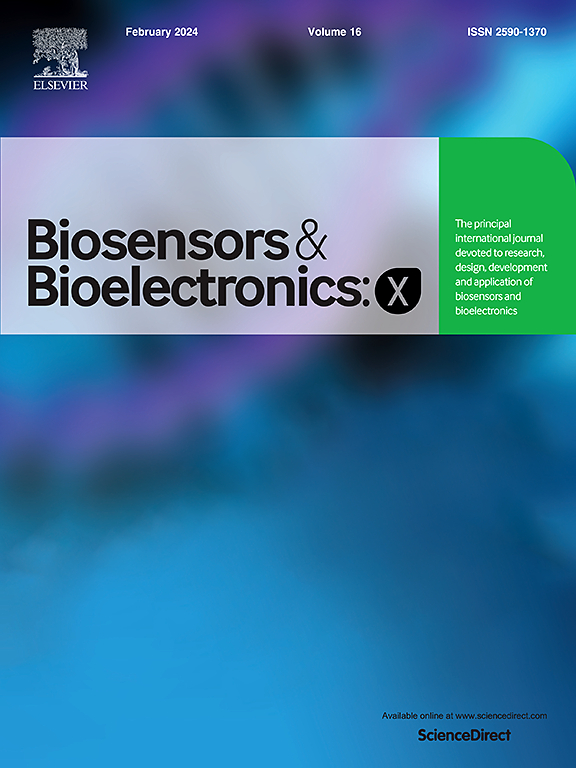Fluorescence sensing platform based on graphene oxide nucleic acid interaction for detecting mercury ions, bisphenol A, and target DNA
IF 10.61
Q3 Biochemistry, Genetics and Molecular Biology
引用次数: 0
Abstract
A multifunctional fluorescence sensing platform based on graphene oxide (GO) was developed to meet the rapid detection needs of environmental pollutants. Three specific mechanisms were employed to achieve highly sensitive detection. One was to use the T-Hg2+ - T structure to induce the dissociation of double stranded DNA from GO surface, achieving Hg2+ detection with a linear range of 100–1500 nM and a detection limit of 0.110 μ M. The second method was to release the trigger chain through the dissociation of bisphenol A (BPA) adapter complementary chain complex, combined with GO fluorescence quenching characteristics to detect BPA, with a detection limit of 0.5035 μ g/mL. The third method used Exo III enzyme to cleave double stranded DNA for signal amplification, combined with GO differential adsorption detection of nucleic acid fragments to detect target DNA, corresponding to a linear range of 0.01–0.4 nM and a detection limit of 11.2 pM. The spiked recovery rates of the three methods in wastewater/serum samples were 96.82 %–107.49 %, with a relative standard deviation of<3.47 %. The above research method combined nucleic acid recognition characteristics with GO signal regulation function through modular design, providing a new strategy for on-site detection of environmental pollutants.
基于氧化石墨烯核酸相互作用的荧光传感平台,用于检测汞离子、双酚A和靶DNA
为满足环境污染物的快速检测需求,研制了一种基于氧化石墨烯(GO)的多功能荧光传感平台。采用三种特定的机制来实现高灵敏度的检测。一种是利用T-Hg2+ - T结构诱导氧化石墨烯表面双链DNA解离,实现Hg2+检测,线性范围为100-1500 nM,检出限为0.110 μ m。二种方法是通过双酚a (BPA)接合互补链络合物解离释放触发链,结合氧化石墨烯荧光猝灭特性检测BPA,检出限为0.5035 μ g/mL。第三种方法利用Exo III酶裂解双链DNA进行信号扩增,结合GO差分吸附核酸片段检测靶DNA,对应线性范围为0.01 ~ 0.4 nM,检出限为11.2 pM。3种方法在废水/血清样品中的加标回收率为96.82% ~ 107.49%,相对标准偏差为3.47%。上述研究方法通过模块化设计将核酸识别特性与GO信号调节功能相结合,为环境污染物的现场检测提供了一种新的策略。
本文章由计算机程序翻译,如有差异,请以英文原文为准。
求助全文
约1分钟内获得全文
求助全文
来源期刊

Biosensors and Bioelectronics: X
Biochemistry, Genetics and Molecular Biology-Biophysics
CiteScore
4.60
自引率
0.00%
发文量
166
审稿时长
54 days
期刊介绍:
Biosensors and Bioelectronics: X, an open-access companion journal of Biosensors and Bioelectronics, boasts a 2020 Impact Factor of 10.61 (Journal Citation Reports, Clarivate Analytics 2021). Offering authors the opportunity to share their innovative work freely and globally, Biosensors and Bioelectronics: X aims to be a timely and permanent source of information. The journal publishes original research papers, review articles, communications, editorial highlights, perspectives, opinions, and commentaries at the intersection of technological advancements and high-impact applications. Manuscripts submitted to Biosensors and Bioelectronics: X are assessed based on originality and innovation in technology development or applications, aligning with the journal's goal to cater to a broad audience interested in this dynamic field.
 求助内容:
求助内容: 应助结果提醒方式:
应助结果提醒方式:


